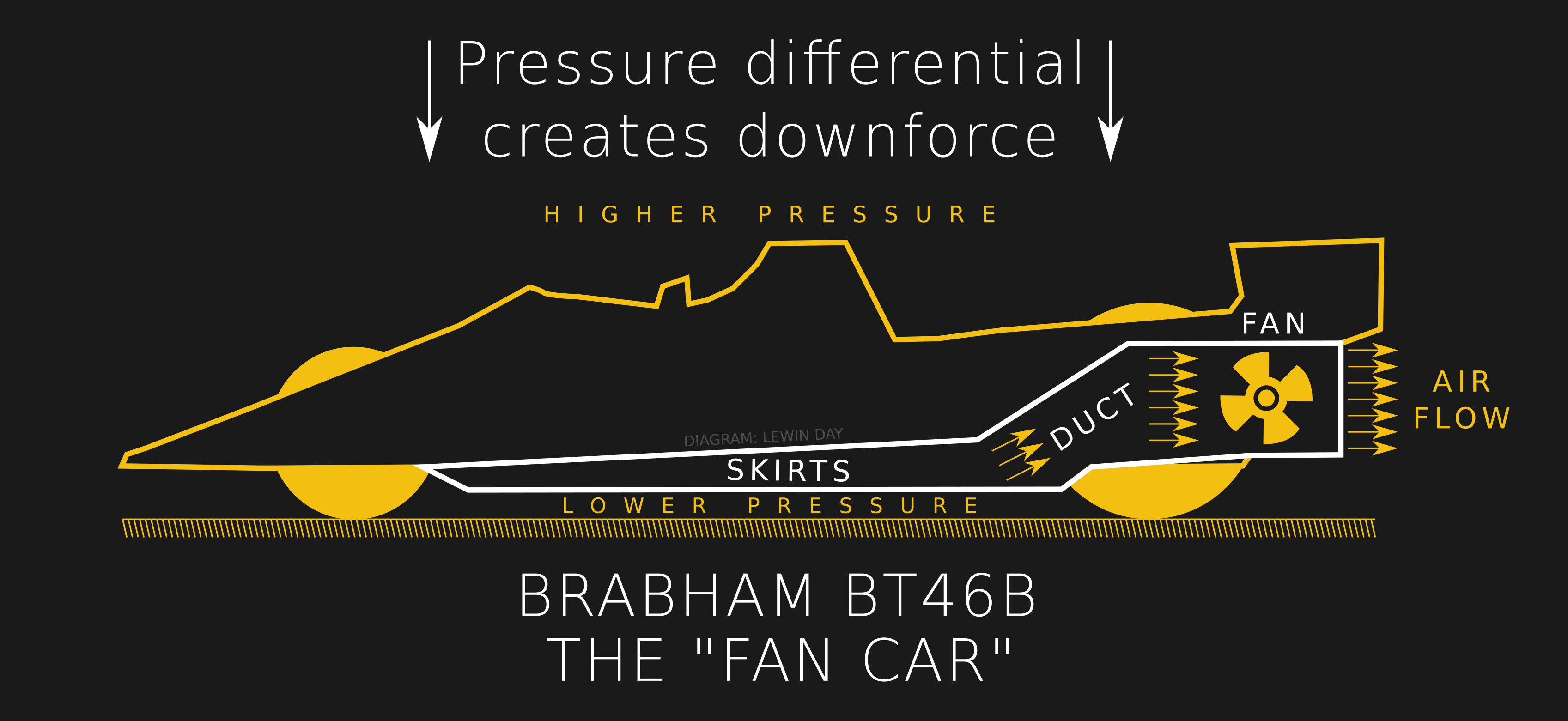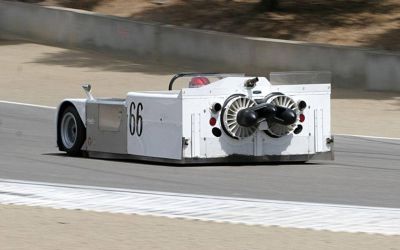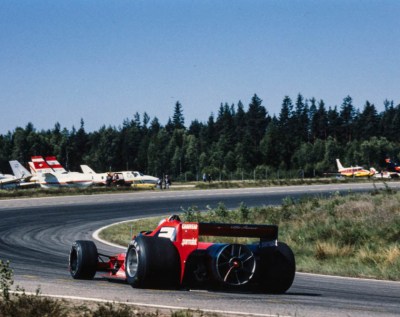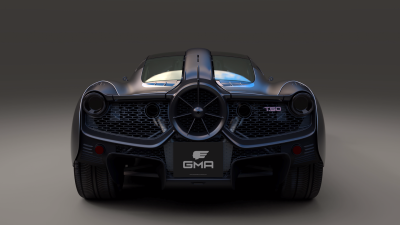The Rise And Fall Of The Fan Car
The advent of aerodynamic wings in motorsport was one of the most dramatic changes in the mid-20th century. Suddenly, it was possible to generate more grip at speed outside of altering suspension setups and fitting grippier tyres. However, it was just the beginning, and engineers began to look at more advanced ways of generating downforce without the drag penalty incurred by fitting wings to a racecar.
Perhaps the ultimate expression of this was the fan car. Mechanically complex and arguably dangerous, the technology offered huge downforce with minimal drag. However, the fan car’s time in the spotlight was vanishingly brief, despite the promise inherent in the idea. Let’s take a look at the basic theory behind the fan car, how they worked in practice, and why we don’t see them on racetracks today.
The Theory

The theory behind the fan car is similar to that of the ground-effect car, in that it involves generating a low pressure region beneath the car, causing the higher atmospheric pressure above to press the car down into the road. This increases the normal force between the tyres and the road surface, thus increasing the available grip. However, unlike the ground effect car, which relies on the car’s forward velocity to generate the low pressure region, fan cars actively do this with, as you might expect, a giant fan.
By fitting a fan to the back of the vehicle with the appropriate ducting, it can suck out air from beneath the car, creating the desired low pressure region underneath, and thus, downforce. In practice, to make the most of the effect, the area beneath the car should be sealed to the ground, like an inverse hovercraft. This limits the amount of outside air that can rush under the car when the fan is operating, ensuring the pressure underneath drops as low as possible. The lower the pressure underneath the car, the more the car will be pressed into the track surface by the atmospheric pressure above.

This method of generating downforce requires power to run the fan, but doesn’t generate anywhere near as much drag as wings. Additionally, the benefit of the fan car over static aerodynamic surfaces like ground effect venturis and wings is that the fan can lower the pressure beneath the car regardless of how fast the vehicle is travelling. Wings and venturis don’t start doing real work until the car exceeds 100 km/h or so, but the fan can generate huge downforce from a dead stop all the way to the car’s top speed. This is a huge benefit in low speed corners, allowing a fan car to put more power to the ground sooner than a regular competitor who needs to gradually get up to speed before their wings produce sufficient additional grip.
Practical Considerations

It’s not enough to simply whack a fan on the back of an existing car and call it done; like all aerodynamic modifications, careful design and testing is key to ensure success. Perhaps the most difficult feature of building a working fan car is producing viable sideskirts that can reliably seal underneath the car. These skirts need to be able to keep the undertray relatively well sealed to a consistent degree around the whole racetrack, regardless of bumps, pebbles, or other pertubations. If the skirt seal is unreliable, the car could face a sudden loss of downforce when the car hits a bump, as outside air rushes beneath the car, eliminating the low pressure zone underneath.
If this happens midcorner, the car can suddenly spin out as it no longer has enough grip to stay stuck to the track. The consequences for the driver in such a situation can be catastrophic, so designers worked hard to design skirts that would maintain a good seal in most conditions. Various ideas involved sliding skirts, or spring loaded skirts that maintained contact with the track over varying surfaces, and could account for wear over a race distance. Some fan cars, like the Brabham BT46B, featured pitot tubes and modified altimeters that could display the pressure beneath the car to the driver, letting them know if a skirt had failed and allowing them to change their driving style accordingly.

Another consideration is how to drive the fan. The fan can be driven by its own engine or motor; this has the benefit of providing consistent downforce as long as the speed of the fan stays constant. Alternatively, the fan can be driven off the car’s main engine, with the caveat that the fan speed will change with engine speed. As long as this is predictable, however, it need not be a problem. In practice, drivers of this type of fan car noted they could stick the car to the track by accelerating through a corner, as downforce would increase with the engine speed.
The History
The first fan car built for competition was the Chaparral 2J, entered into the largely no-holds-barred Can Am series. The brainchild of Jim Hall, it debuted in 1970 featuring two massive fans from the cooling system of the M109 Howitzer on the back. Its slab-sided design absent of any wings was surprising at the time, but its competition quickly realised the threat the car posed.
With the fan system powered by a two-cylinder snowmobile engine, the sound of the car was a constant piercing whine at rest, and even louder when its Chevrolet V8 roared into life. Hunkering down two inches when the fans turned on, the car used sliding skirts connected to the suspenison to maintain a consistent one inch gap to the track all the way around, maintaining good downforce without destroying the skirts too quickly. The car had incredible grip, giving it huge corner speed and excellent braking ability. However, reliability proved to be a problem. Despite qualifying up to a full two seconds faster than the field, the car never won a race, often due to the fan engine failing before the finish. The car was outlawed for the following season after concerted protests from other competitors, who felt the fan design was an unfair advantage and constituted a “movable aerodynamic device”, already outlawed under FIA rules. There were also allegations that the system blew dust and rocks at other competitors, a potential hazard on the track.

The Brabham BT46B followed a similar story in Formula 1, eight years later. A development of the existing BT46, the fan car design was chosen when the team realised they couldn’t modify their existing car to use ground effect venturi tunnels like the dominant Lotus cars due to their flat-12 engine. Instead, Gordon Murray designed the BT46B with a large fan to generate downforce instead. The rules at the time stated that any device whose primary function was aerodynamically related could not move; thus, over 50% of the fan’s flow was designed to cool the engine, thus making its primary function a cooling device. The scrutineers ruled it legal for the 1978 season, but alas, the car was to have a short-lived career. In its first appearance at the Swedish Grand Prix, Niki Lauda brought home the win in the BT46B, after sandbagging much of qualifying to try and placate those opposed to the new design. Regardless, other teams protested, most notably Colin Chapman of the Lotus team, whose cars were otherwise in the box seat to take the championship. Initial attempts to argue that the device was dangerously flinging debris at other cars were shouted down when the team pointed out the outlet velocity of the fan was just 55 mph. Not wiling to relent, the opposing teams threatened to pull out of the Formula One Constructor’s Association, a powerful body led by Bernie Ecclestone, then head of the Brabham team. Ecclestone agreed to pull the car from competition after just one race, in order to preserve his own position. While the BT46 design failed to win without its party piece, the deal paid off for Ecclestone – who eventually parlayed his position with FOCA into leading Formula 1 for decades.

Since then, fan cars have been absent from the motorsport world, as FIA regulations clamped down strongly against any form of movable aerodynamic device. However, the fan car concept has had one last gasp, with Gordon Murray this time penning a road car with the technology instead, by the name T.50. The design differs somewhat, however, with the intelligently-controlled electric fan used more to maintain flow to the car’s steep underbody diffuser, rather than outright generate downforce through its own suction. The fan is used in a variety of modes to reduce drag and maintain downforce, with flaps used to vary the flow underneath the car depending on the flow regime. Powered by a 48V motor, it’s highly reminiscent of the BT46B from the rear, even if it works somewhat differently.
Looking Ahead
Ultimately, we won’t be holding our breath for fans to make a reappearance at the racetrack anytime soon. Worldwide, regulations against movable aerodynamic devices have remained in place and only gotten more restrictive as teams pushed the boundaries in various ways. The complaints about debris will remain, and as with the ground effect era, it’s likely such devices would lead to corner speeds getting high enough to test the limits of human endurance. Regardless, the technology remains a fantastically interesting one, for the sheer performance it promises and the manner in which it burned so brightly for such a short time.
Post a Comment